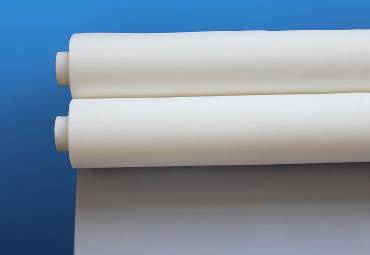What Should You Know about Press Cloth?
May. 15, 2020
Press cloth is usually classified in three ways: by the material of the press cloth; Classification by yarn composition of press cloth; By weave of a press cloth. The filtration performance of a press cloth is not only related to the material of the press cloth fibers, but also to the way the yarn is formed and the way the press cloth is woven. Press cloth can be divided into two categories according to the fiber material: one is a natural fiber, such as cotton, wool, silk, hemp, and fiber; The other category is chemical synthetic fibers, such as polyester, nylon mesh, polyacrylonitrile, modified acrylonitrile, aromatic polyamide, vinylon, acrylic, polyester, and some new synthetic fibers are constantly introduced. Polyester bolting cloth supplier shares the four common fibers with you.
1. Polypropylene fiber
Material properties: good acid resistance, alkali resistance, wear resistance, good electrical conductivity, slightly better recovery rate than polyester, and poor corrosion resistance. Material properties: polypropylene short fiber, spun yarn hair; polypropylene long fiber, smooth yarn formation, so the industrial cloth is woven from polypropylene short fiber, the cloth has hair, powder filtration, and pressure filtration effect is longer than Fiber is good. The industrial cloth made of long polypropylene fiber has a smooth surface and good air permeability.
It is mainly used in the matching of plate and frame filter press, vacuum filter, belt filter, page filter, centrifugal filter, and other equipment in the chemical industry, fertilizer, building materials, sugar manufacturing, non-ferrous metal smelting, sewage treatment, and other industries.

Nylon Mesh
2, Polyester fiber
Material properties: acid and weak alkali resistance. Wear resistance, corrosion resistance, poor resilience, and conductivity.
The polyester screen mesh is mainly used for solid-liquid separation of plate and frame filter presses, belt filters, screen printing, vacuum filtration, and smoke and dust removal in chemical, metallurgy, food, pharmaceutical, building materials, mining, and other industries, Supporting the use of solid-gas separation equipment!
3, Nylon fiber
Material properties: Nylon fiber has high strength, 4-5.3Cndtex strength and 18% -45% elongation. When the elongation is 10%, the elastic recovery rate is higher than 90%. The strength of nylon is the strongest among fibers. It has been determined that the abrasion resistance of nylon fibers is 10 times the abrasion resistance of cotton fibers and 50 times the abrasion resistance of viscose fibers. Pressed together with rubber is an ideal material for manufacturing automobile tires.
4, Vinylon fiber
Material properties: The chemical name of Vinylon fiber is polyvinyl alcohol.
Its strength is lower than polyester, the strength is only 5.32-5.72 Cndtex, its elongation at break is 12-25%, its elasticity is poor, its fabric shape retention is poor, its wear resistance is good, and its durability 1-2 is twice that of pure cotton, but one of the biggest advantages is that it can withstand the action of strong alkali, and has good hygroscopicity, easy to combine with rubber, and is a good material used in the rubber industry. Low temperature, shrinkage rate can reach 100 degrees, not resistant to acid.
Suitable for industries such as alkaline and rubber industries.







